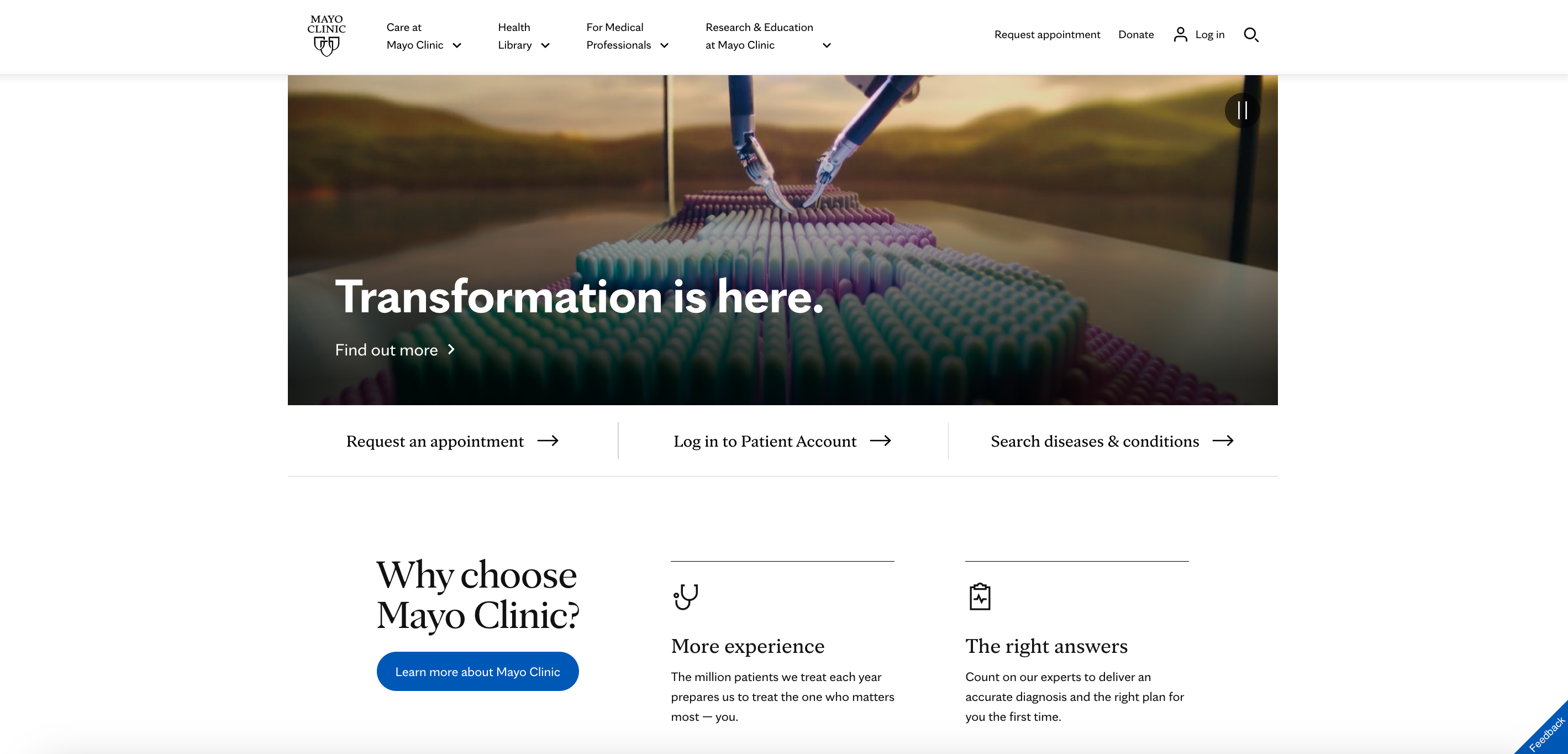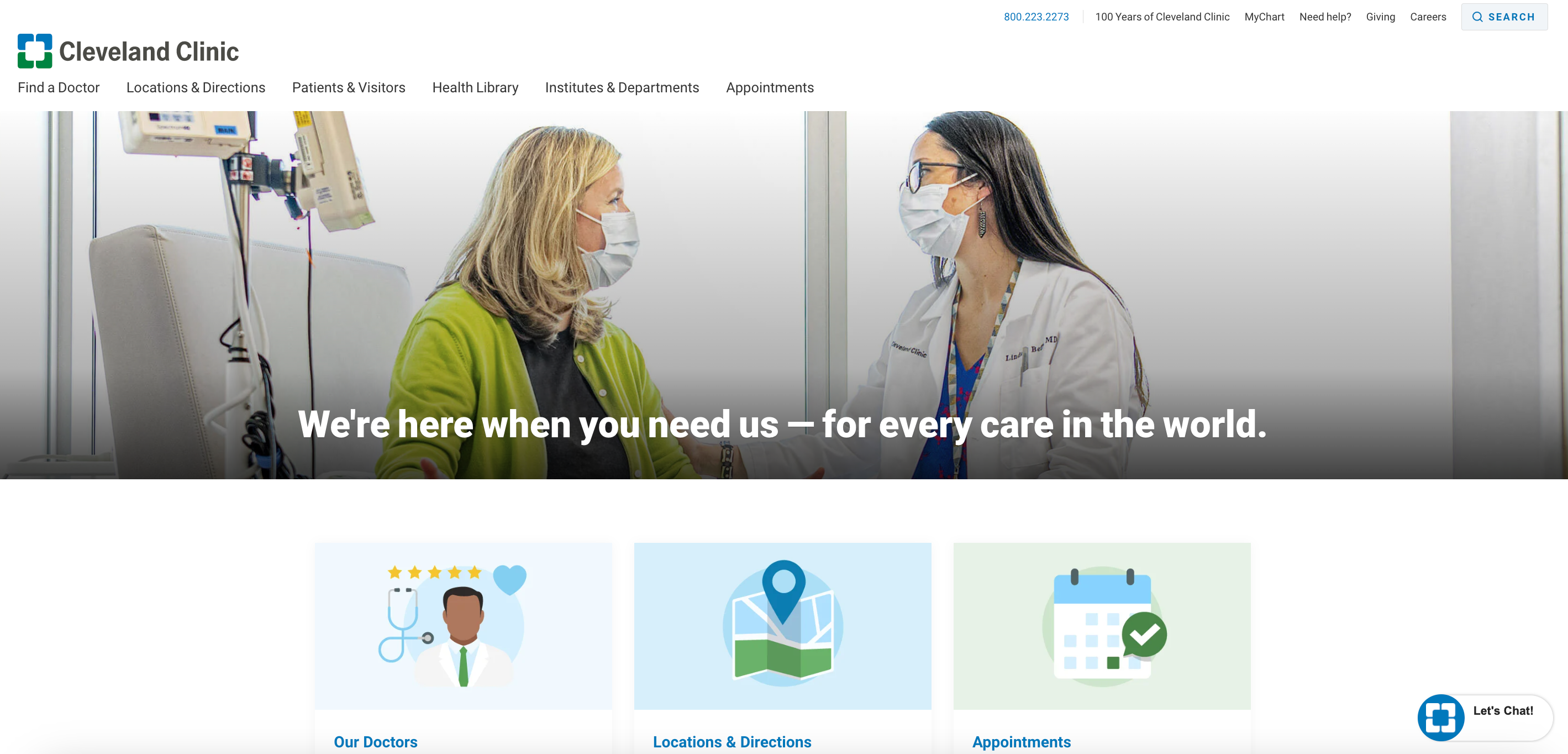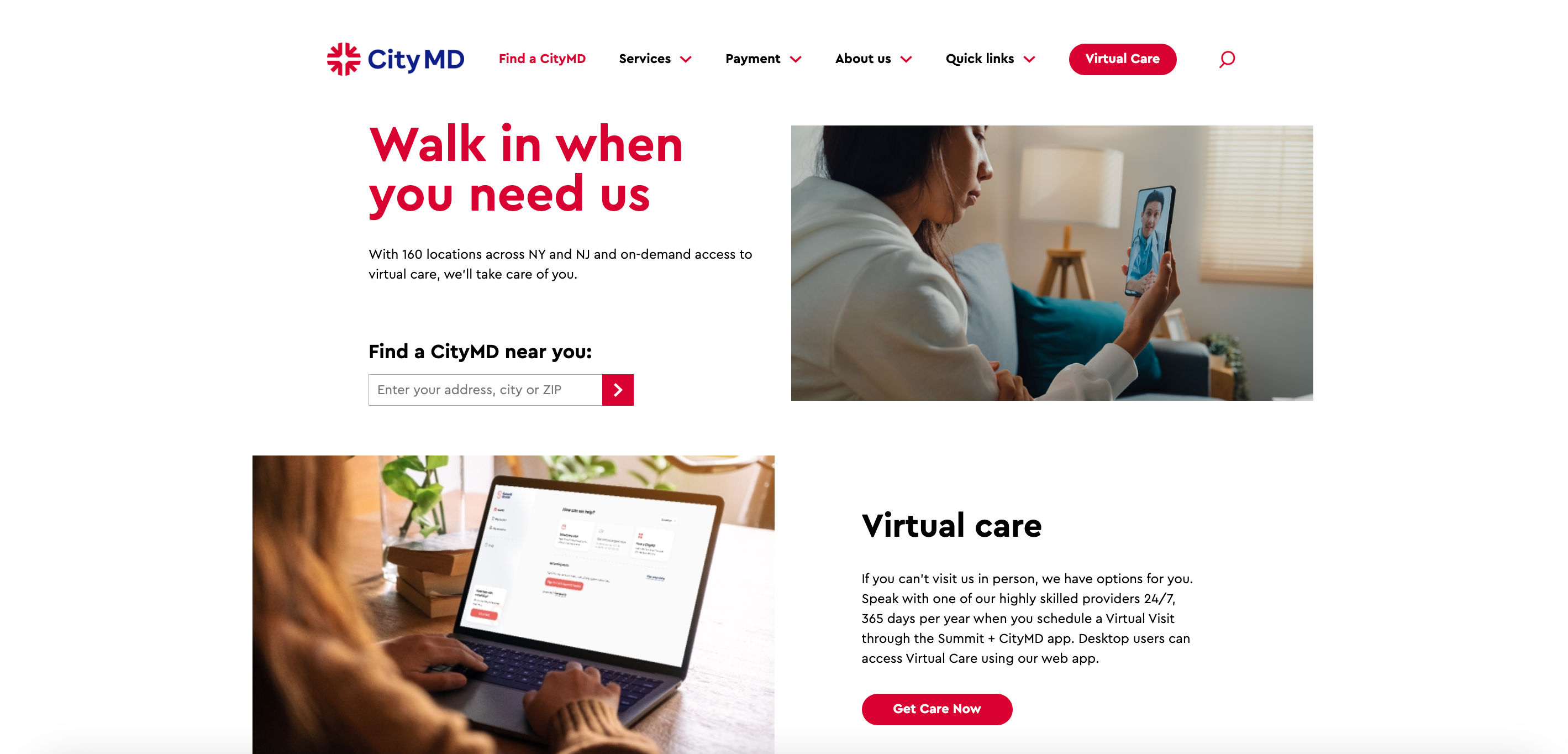The importance of clinic branding in healthcare is growing. Having a strong brand means having a competitive advantage in the overly saturated healthcare market. This, in turn, leads to the acquisition of more patients and higher revenue.
In this post, you’ll discover what a brand is, what it consists of, why your brand is crucial for your healthcare business, and how to build a powerful brand for your clinic.
What is a brand?
A brand is the set of expectations, memories, stories and relationships that, taken together, account for a consumer’s decision to choose one product or service over another.
Let's start with defining what a brand is. A brand is the way a product or service is perceived by consumers. It’s not only about a logo and a name. It’s also about recognizable emotions and feelings that brand assets evoke.
It has long been claimed by neurologist Donald Calne that buying decisions are 80% emotional and 20% rational. According to Calne, “Reason leads to conclusions. Emotion leads to action.” With this in mind, a powerful brand is key for a clinic’s successful development and growth.
I’ve learned that people will forget what you said, people will forget what you did, but people will never forget how you made them feel.
What makes a brand?
The human brain is designed in such a way that what it perceives is what is real to it. And this is where the power of branding lies. Branding shapes our perceptions, and therefore it can construct our reality. The power of branding to shape consumers’ reality explains why large companies like Apple, Tesla, and Samsung spend enormous funds on branding each year.
When you leverage this power effectively, you can significantly influence consumers’ purchasing behavior.
Let’s have a look at the key elements of medical practice branding. A brand comprises positioning and a brand pyramid.
Brand positioning
Your brand’s positioning is the place your brand occupies in the minds of your target patients. To formulate your brand positioning, answer the following questions:
- How would you describe your services in one sentence?
- Which characteristics of your services bring value to your patients?
- How do you define your brand persona?
Brand positioning for a clinic may look like this:
| How would you describe your services in one sentence? | Our clinic is a multi-specialty medical center with its own diagnostic laboratory. |
| Which characteristics of your services bring value to your patients? | The ability to get a comprehensive medical examination in one place relatively quickly. |
| How do you define your brand persona? | Our clinic is your friend who takes care of your health. |
When formulating your brand positioning, stick to the following rules:
- Be specific
- Be short and to the point
- Speak the language of your prospective patients
Brand positioning shapes patient preferences, dictates their purchasing behavior, and is the basis for patient loyalty.
Brand pyramid
A brand pyramid involves several layers that should be regarded from bottom to top: features and attributes, functional benefits, emotional benefits, brand persona, and brand idea.

Features and attributes are the most distinguishing properties of your clinic and services. In other words, these are physical expressions of your brand’s values. These outstanding characteristics are of the most value for your patients.
Functional benefits are the benefits patients get from using your services.
Emotional benefits are the feelings patients experience when using your services.
A brand persona is a description of your brand as if it were a person.
Your brand idea is the essence of your brand — the promise that you expect patients to associate with your brand. This is actually the slogan you should use for your marketing campaigns.
Key takeaway: A brand pyramid offers a systematic approach to clarifying your brand essence, which determines the feelings and emotions patients associate with your brand. A brand pyramid also guides your marketing strategy.
Seven reasons why branding medical practice is worth trying
Effective branding for your clinic focuses on what differentiates you from your competitors. This is important because with so many healthcare providers to choose from, patients need a convincing reason to choose your clinic over others.
Here’s a list of key benefits your powerful clinic brand can get you. Effective branding:
- Helps you reach the right people. When you offer your services to people who share your values, you can get the best results and achieve the greatest patient satisfaction.
- Educates your prospects. Your prospective patients should make an informed decision before choosing your clinic. To enable them to do this, you should educate them through branding. Your communication strategy has to address potential patients’ greatest concerns and fears, as this is what will drive their behavior.
- Allows you to stand out from competitors. A brand gives your healthcare facility a unique personality and helps you become recognizable and memorable in a highly competitive landscape.
- Enhances the patient experience. When leveraged properly, a powerful brand enables your clinic to enhance the patient experience from the moment a patient learns about your brand to the moment they leave your clinic — and beyond.
- Helps you establish trust. Trust is conveyed through every aspect of branding — from visual identity to messaging. Images, typography, and colors as well as how you talk across all touchpoints contribute significantly to whether your brand is considered trustworthy.
- Allows you to set prices you consider reasonable. If you show that you deliver high-quality services, patients will be more likely to value your services and pay more for them.
- Leads to returning patients and referrals. If you deliver on your brand’s promises, your patients will remember you. So if they need the services you deliver in the future, they will most likely think about you first and refer their family and friends to you.

Six steps to branding your clinic
To create a strong brand for your clinic, follow these steps:
Step 1. Identify your unique value proposition
In today’s highly competitive environment, your patients need a convincing reason to choose your clinic over other healthcare facilities. The path to brand differentiation starts with formulating a unique value proposition. Your unique value proposition gives you a strong competitive edge and sets you apart from other healthcare providers.
To identify your UVP, think about the most essential thing you want the public to remember about you. With so many commercial messages a day, you need to stop trying to be everything to everybody. You should focus on becoming special to somebody instead.
Start by answering the question “What makes our clinic special?” Then refine your answers to define a single core concept. Some aspects you might consider are provided below.
- Do you…
- Have special equipment?
- Use a unique cutting-edge technology?
- Have leading trusted specialists on staff?
- Offer unique services?
- Have particular credentials or experience?
- Provide a unique patient experience?
- Have other differentiating factors?
In short, analyze what positive attributes are working in your favor. Then, think of how you can promote these attributes to your prospective patients. Remember that your unique value proposition sharpens your competitive edge, influencing and motivating your prospective patients to see your clinic as their best choice.
Ensure your UVP is patient-centric. Consider what patients will value most when formulating it.

Step 2. Know your who, why, and how
It is extremely important to understand who you want to treat, why you want to treat them, and how you will solve their health problems when it comes to building a brand for your clinic.
Who: Think about the patients you’re going to serve, including their demographic characteristics (age, gender, location, marital and parental status, occupation, income level) and psychographic characteristics (attitudes, personality traits, aspirations, goals, values, pain points, interests, objections, concerns, challenges, fears, beliefs, risks, decision-making factors, etc.).
Why: Explore the reasons for treating your patients. Do you want to help them live a full life with cancer? Or return to sports after a disease or injury? Or return to intimate activities?
How: Consider how you will help your patients solve their health issues, and think about your overall treatment philosophy.
Knowing who you want to treat, why you want to treat them, and how you will solve their problems will help you personalize your messages to your patients’ needs and promote your brand.
Step 3. Create a visual and verbal brand identity
With a well-positioned brand, people understand what your brand stands for and why it’s their best choice. And it’s not just about a logo. A brand identity system is what makes you recognizable and prominent.
A brand identity system is a combination of visual and verbal elements that work together to create consistent and unified brand assets to effectively communicate your brand’s value to prospects. Two types of brand identity (visual and verbal) differ in the elements they consist of and the goals they meet.
Visual brand identity is your brand’s “outfit” — its unique style and image. It’s the visual manifestation of your brand and is a combination of such elements as:
- Logo
- Colors
- Typefaces
The goal of your brand’s visual identity is to help your prospective patients recognize your brand, remember it, and distinguish it from others.
Your brand’s visual elements should complement your clinic’s name and brand persona. Think about what colors and images best represent the persona behind your brand.
The colors you choose should be consistent with the feelings associated with your brand. For example, it wouldn’t be wise for a children’s clinic to create a black-and-white logo because these colors are not associated with children and can even evoke negative emotions in them.
Your verbal brand identity is the way your brand sounds. It’s the verbal manifestation of your brand and is a combination of such elements as:
- Brand name — A powerful, meaningful, and memorable name
- Tagline — A short phrase that conveys the value of your brand and your unique value proposition
- Brand voice — The style in which your brand communicates: authoritative, fun, playful, intellectual, kind
- Brand tone — Reflects your brand’s attitude in a given situation
- Brand story — An emotional formulation of what your brand stands for; a narrative encompassing the facts and feelings created by your brand
The goal of verbal brand identity is to help your prospective patients understand your messages, remember them, and act accordingly.
Take a look at this great example of brand identity created by The Smile Space.

The Smile Space is a family dentist and orthodontist. Their logo — a square with a smile — is simple but effective, as it visualizes the brand’s name and helps you immediately understand what type of clinic The Smile Space is. The images and text on the clinic’s home page are chosen wisely to relieve the anxiety and fears that many people — especially children — have related to dental care. The Smile Space has created a brand persona that looks friendly and welcoming.
Step 4. Be consistent
Once you’ve built a brand for your clinic, ensure its offline and online presence is consistent across all marketing channels for the brand to flourish. This means all your marketing collateral — your website and social media profiles as well as your blog posts — have to align with your brand. Building brand recognition is a vital aspect for your healthcare business.
Recalling a brand is similar to recalling a person. After people meet for the first time, they remember only a little about each other. Mostly, they can recall things like a person’s name, appearance, and story. If at the next meeting a person uses a different voice or name or behaves differently, it could be challenging for the other person to recognize him or her.
The same happens with inconsistent branding. When brands use inconsistent brand elements across their communication channels — a different style of photos, different typefaces, a different logo — their prospects may simply not recognize them. Clinics with inconsistent brand elements will confuse people and even risk coming across as untrustworthy and low-quality.
Ultimately, inconsistency can impact a brand’s ability to grow its business and win patient loyalty.
Step 5. Use the power of brand ambassadors
Building strong relationships with patients is essential for growing your brand. Identify patients who already frequent your clinic to maximize your promotion opportunities. Word of mouth is a powerful, time-tested technique for spreading the word about your hospital. Not only is this an effective way to promote your business, but it also can potentially save you the expense of advertising. With a positive rapport with patients, you are sure to reap the benefits.
Step 6. Keep record of patient acquisition sources
Keeping track of patient acquisition sources is essential for clinic branding, as it helps with effective resource allocation and targeted marketing efforts. By tracking patient acquisition sources, you can determine which marketing channels or strategies are most effective in attracting patients to your clinic. This information will eventually help you allocate your resources, both financial and human, more efficiently and focus your efforts on the channels that yield the best results.
Top examples of clinic branding worth learning from
While there have been many successful clinic branding examples in the U.S. in recent years, here are three notable ones. Let's check them out.
Mayo Clinic

Mayo Clinic is renowned for its strong brand identity and reputation as a leading medical institution. They have successfully positioned themselves as a trusted and innovative healthcare provider. Mayo Clinic's branding focuses on delivering high-quality patient care, leveraging advanced technology, and promoting cutting-edge research. Their emphasis on patient-centered care, comprehensive medical expertise, and collaboration among specialists has solidified their position as a top healthcare brand.
Cleveland Clinic

Cleveland Clinic has established itself as a premier healthcare organization with a strong brand presence. They are known for their commitment to patient care, medical innovation, and clinical excellence. Cleveland Clinic has successfully differentiated themselves by emphasizing their expertise in complex and specialized medical treatments. Their branding strategy includes showcasing their physicians, patient success stories, and groundbreaking medical research, which has helped them build trust and attract patients from around the world.
CityMD

CityMD is an urgent care clinic chain that has gained recognition for its distinctive branding in recent years. They have successfully positioned themselves as a convenient and accessible healthcare option for non-emergency medical needs. CityMD's branding focuses on their commitment to providing quality care, extended hours of operation, minimal wait times, and a patient-centric experience. Their branding campaigns have emphasized speed, efficiency, and compassionate care, resonating with patients seeking immediate medical attention.
It's worth noting that branding success can be subjective and depend on various factors such as geographic location, target audience, and specific marketing strategies. The examples provided here highlight clinics that have achieved notable branding recognition and have effectively communicated their unique value propositions to their target markets.
Final thoughts
Branding in healthcare is the process of giving meaning to your medical facility and the services you provide by creating a strong association in the minds of your prospective patients.
Branding is important because it not only creates a memorable impression on people but also lets them know what to expect when they come to you. It’s a way to differentiate yourself from the competition and find out exactly what makes your clinic the best choice. Your brand is designed to be a true representation of how you want to be perceived.
If you’re serious about building your healthcare business, you should be serious about building your brand. By establishing a strong brand for your clinic, you get the chance to develop long-lasting and trustworthy relationships with your patients. There are no shortcuts to building a brand. It’s a process you need to invest money and time in to benefit in the long term.
Subscribe and learn more about growing your clinic.
FAQ
-
A clinic brand is the way a product or service is perceived by consumers. It’s not only about a logo and a name. It’s also about recognizable emotions and feelings that brand assets evoke. Effective branding for your clinic focuses on what differentiates you from your competitors. This is important because with so many healthcare providers to choose from, patients need a convincing reason to choose your clinic over others.
-
A brand identity system is a combination of visual and verbal elements that work together to create consistent and unified brand assets to effectively communicate your brand’s value to prospects. Two types of brand identity (visual and verbal) differ in the elements they consist of and the goals they meet.
-
Use the following steps to create your climic brand:
- Identify your unique value proposition
- Learn about your target audience
- Create visual and verbal brand identity
- Be consistent
- Use brand ambassadors
- Keep record of client acquisition sources




